Abstract
1. Lesions in the lateral hypothalamus of rats always produced an immediate increase in total energy expenditure. The increase was maintained for 24 hr or longer only in rats that became and remained aphagic. Rats that showed no recovery from the aphagia and were maintained by tube feeding showed a second, larger increase in metabolic rate after about 7 days.
2. The increase in total energy expenditure was associated, initially, with almost continuous motor activity. With continued aphagia an abnormally differentiated pattern of activity appeared at the same time as the second increase in metabolic rate, and the compartment of energy attributable to activity remained high (34% as compared with 23% in normal rats). These changes were accompanied by a recovery of an instrumental response for food (lever pressing), of interest in offered foods and of grooming activity.
3. Metabolic abnormality not attributable to activity was indicated by increased creatinine excretion of aphagic but not of hypophagic rats.
4. Rats that recovered spontaneous feeding after aphagia returned towards a normal differentiated pattern of activity, with bursts of activity separated by periods of rest, but showed residual abnormality in creatinine excretion.
5. The intimate association between increase of energy expenditure, abnormality of motor activity and the aphagia produced by lateral hypothalamic lesions is consistent with the hypothesis that motor incoordination or disorganization is a cause of the aphagia.
Full text
PDF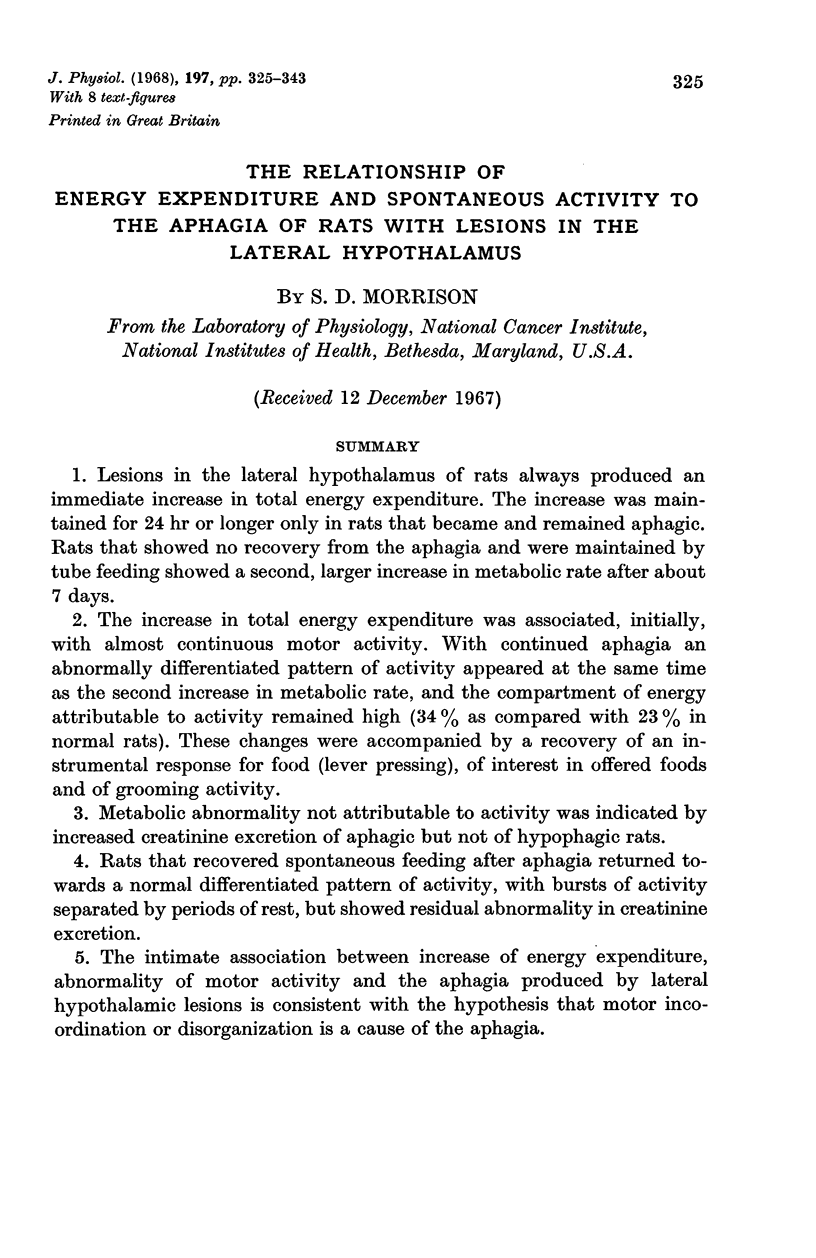

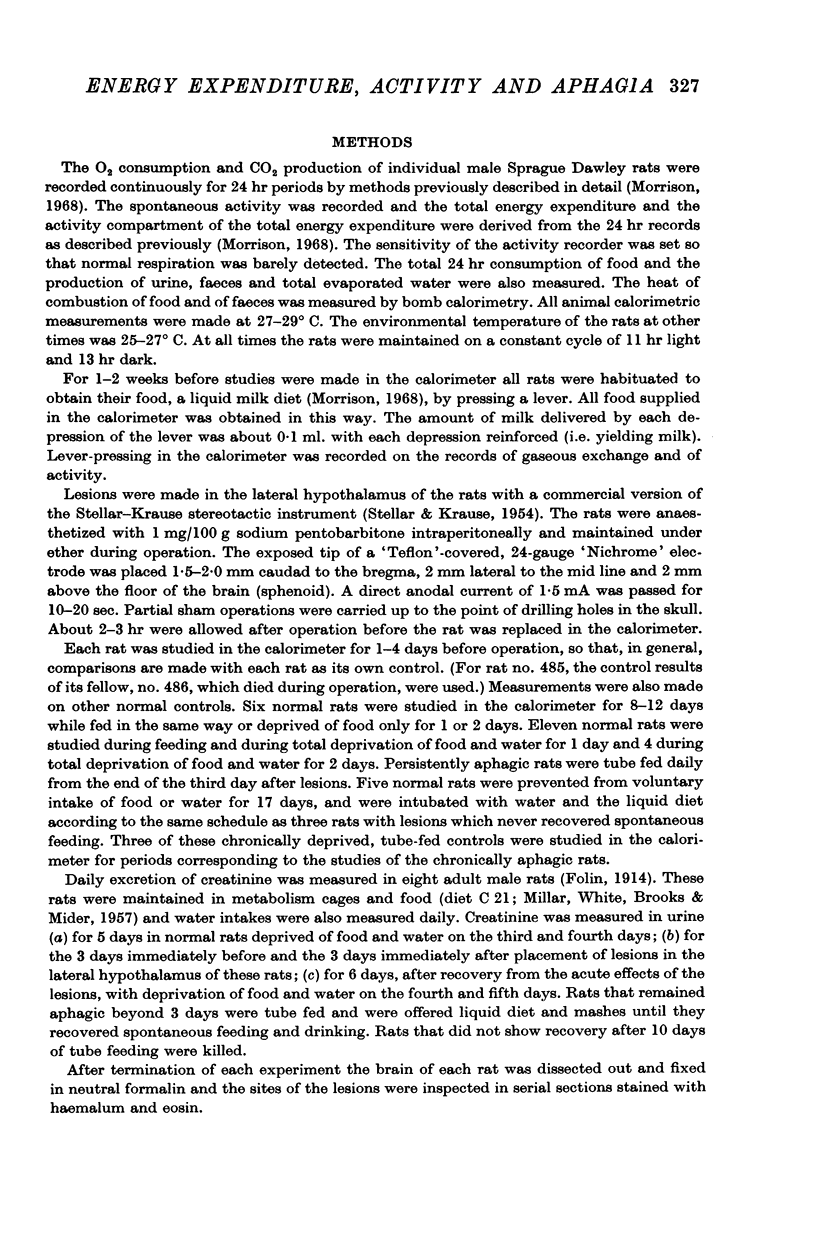
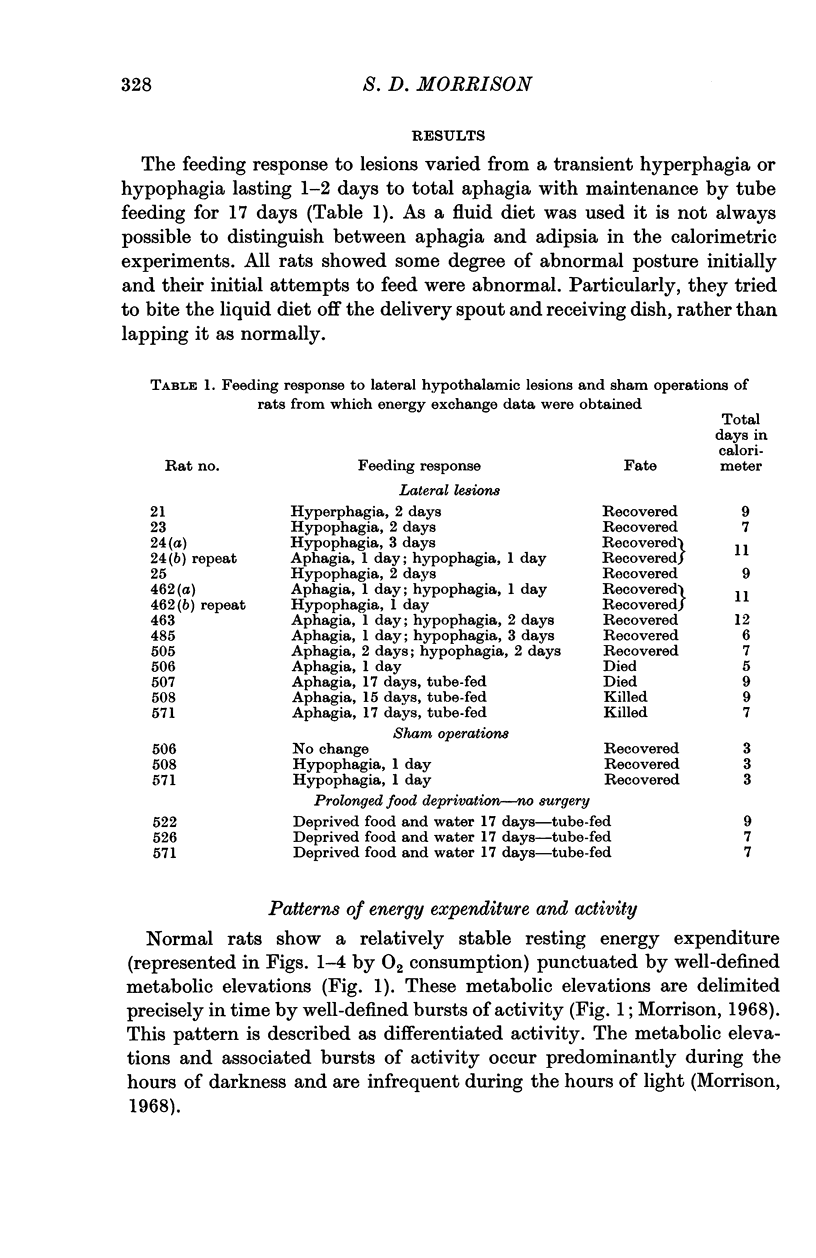

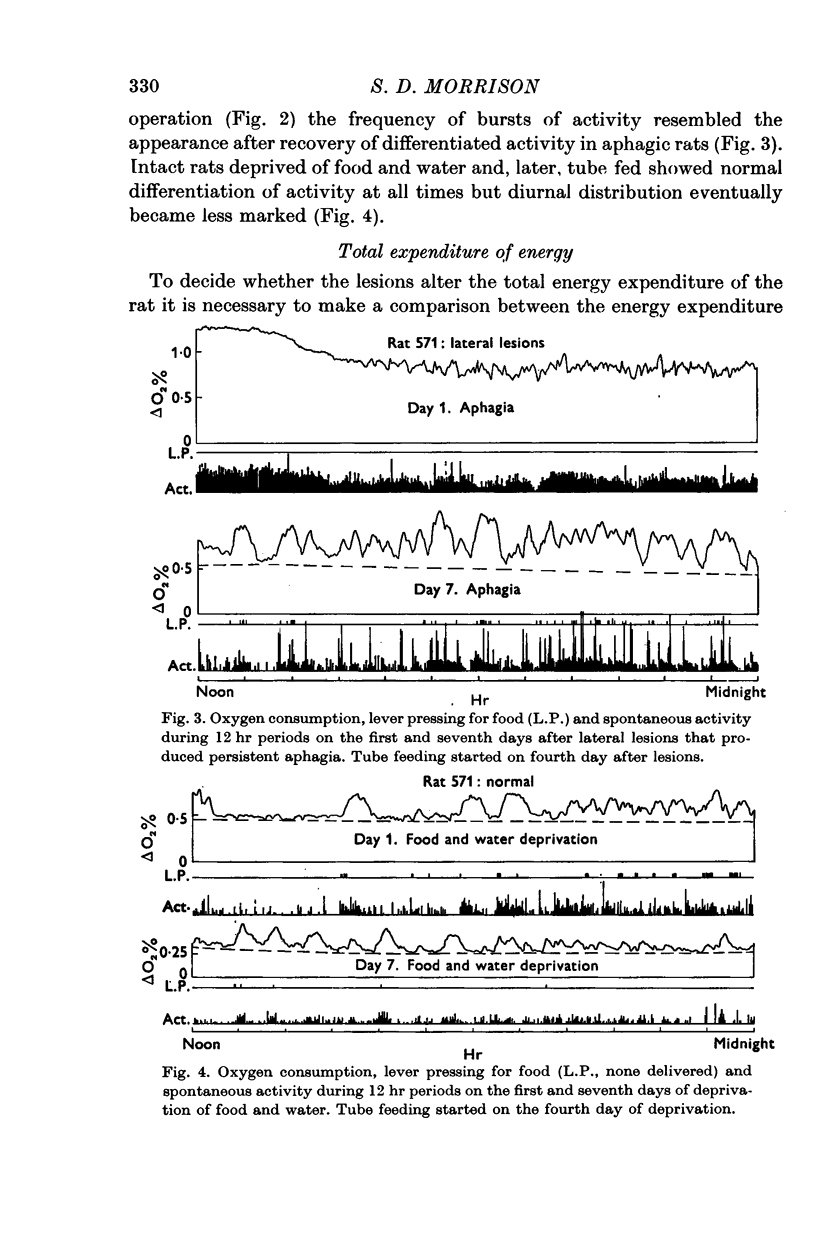

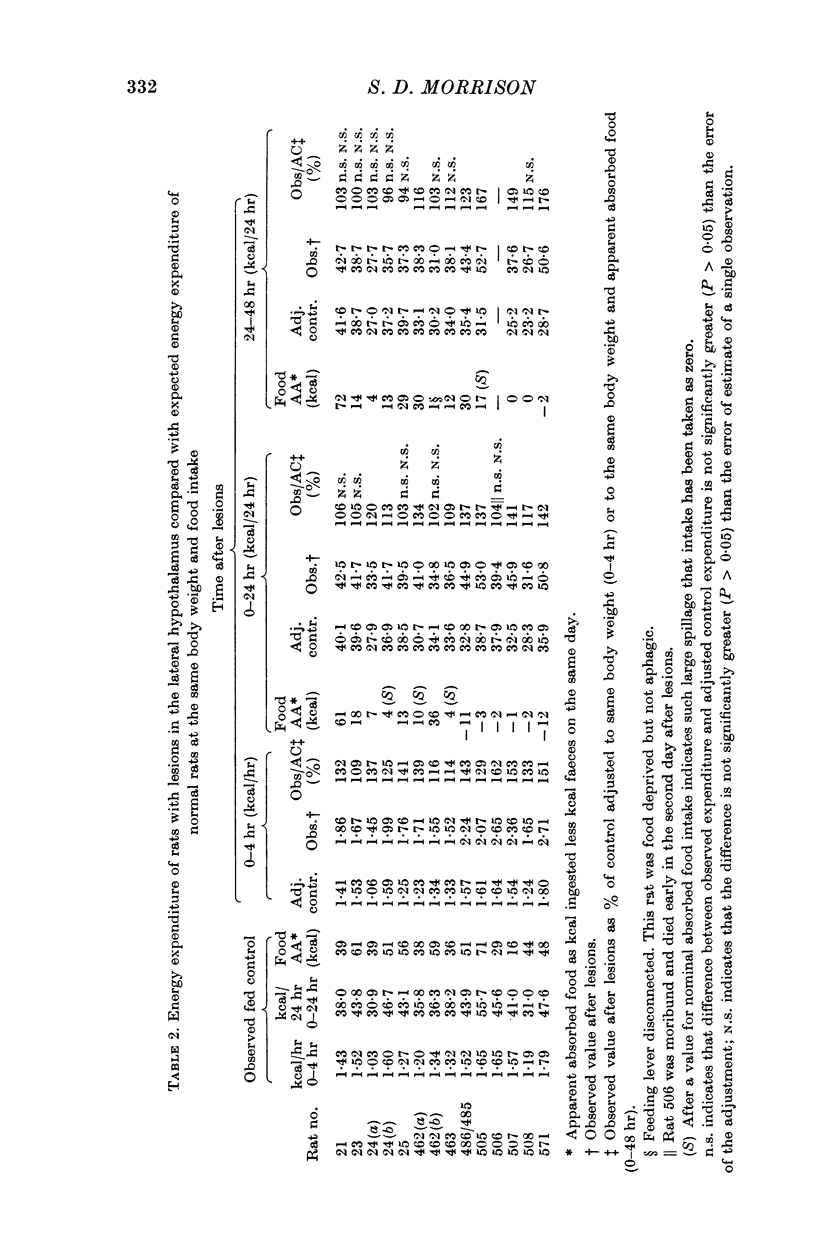
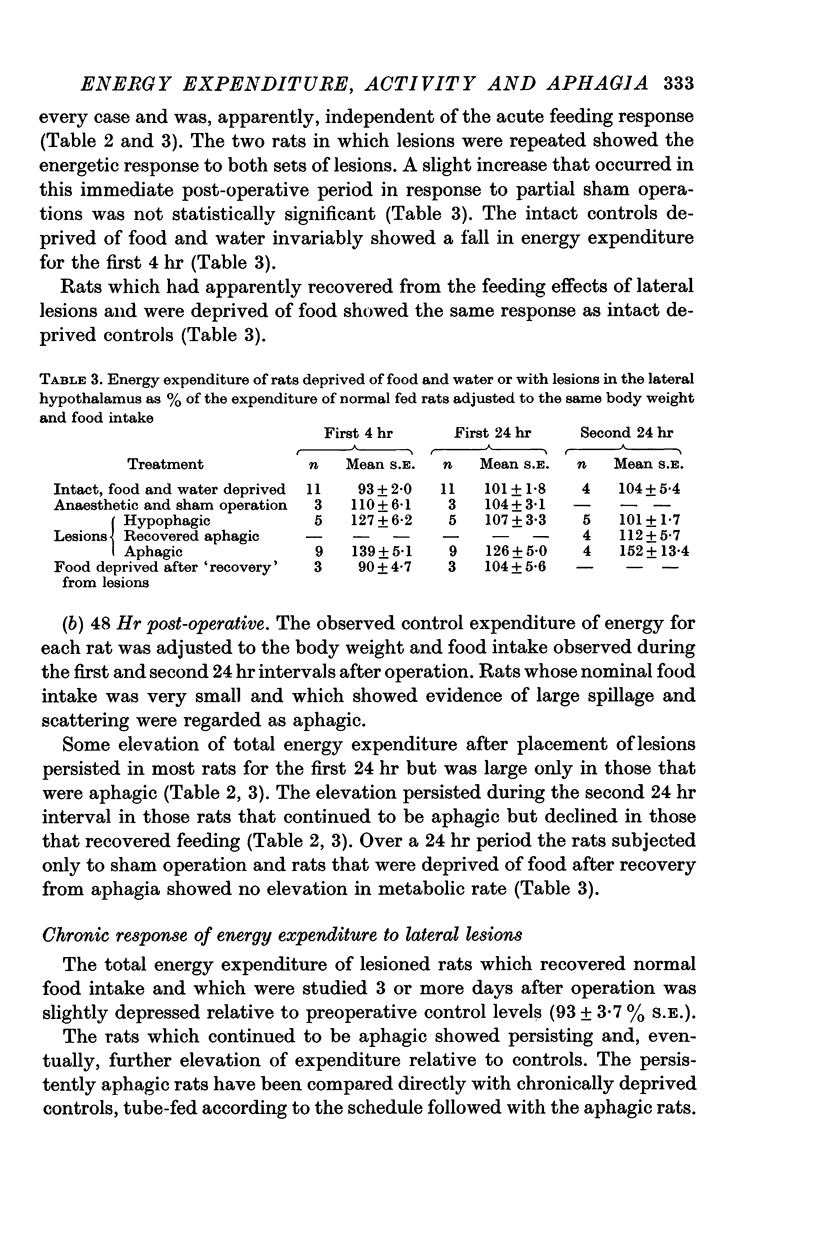
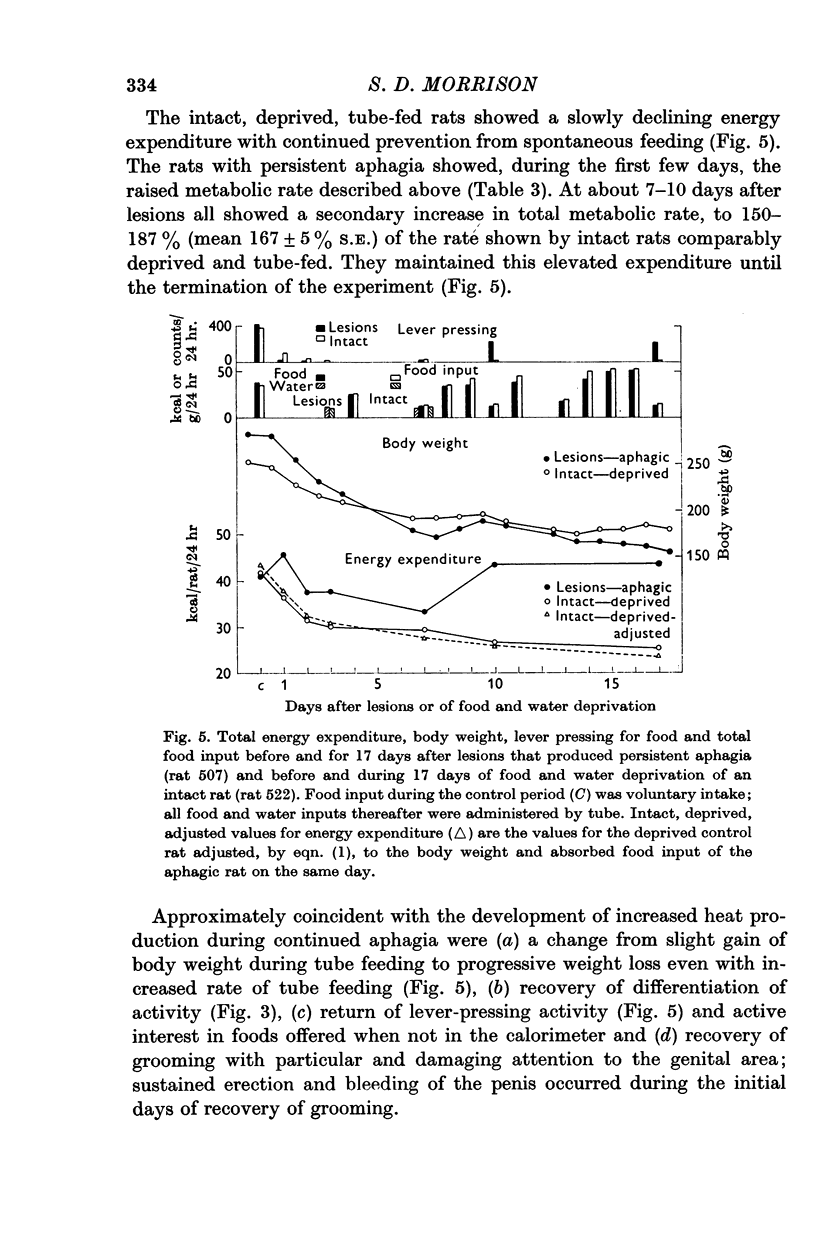
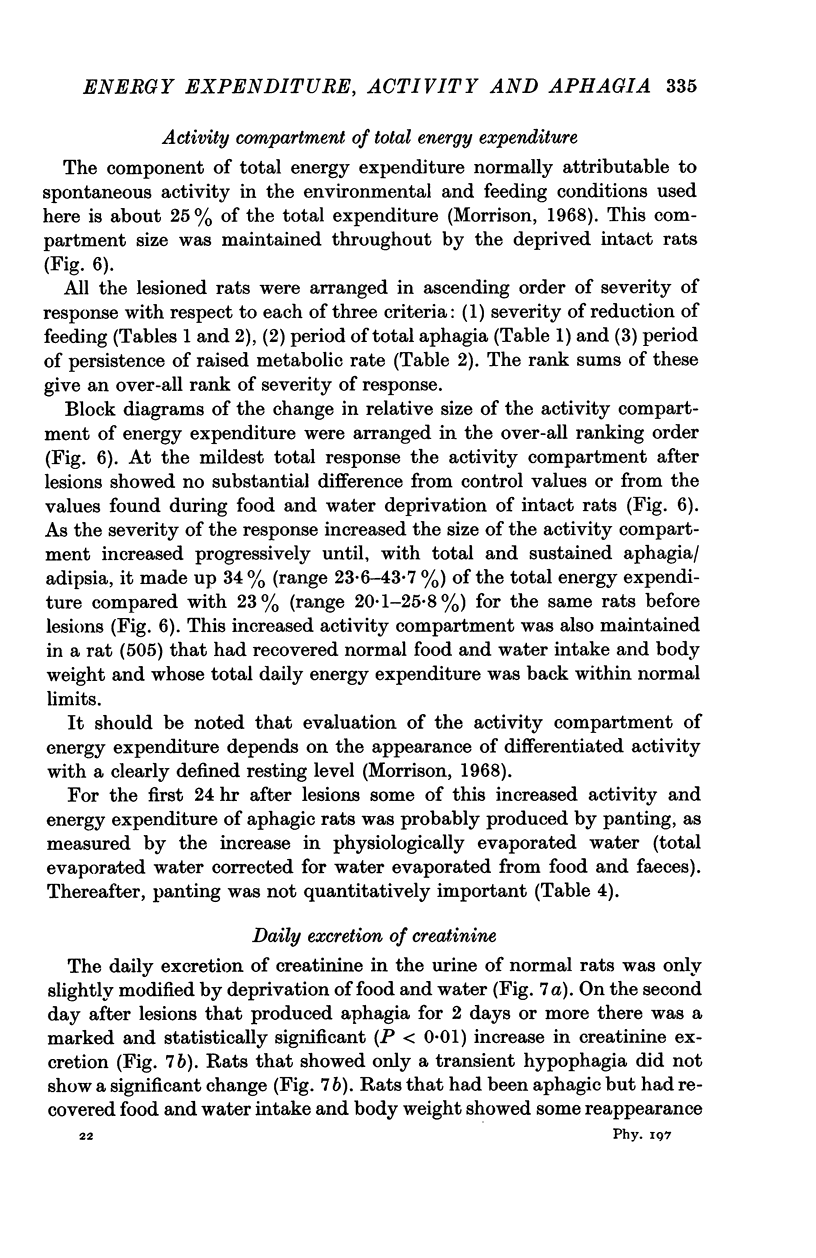
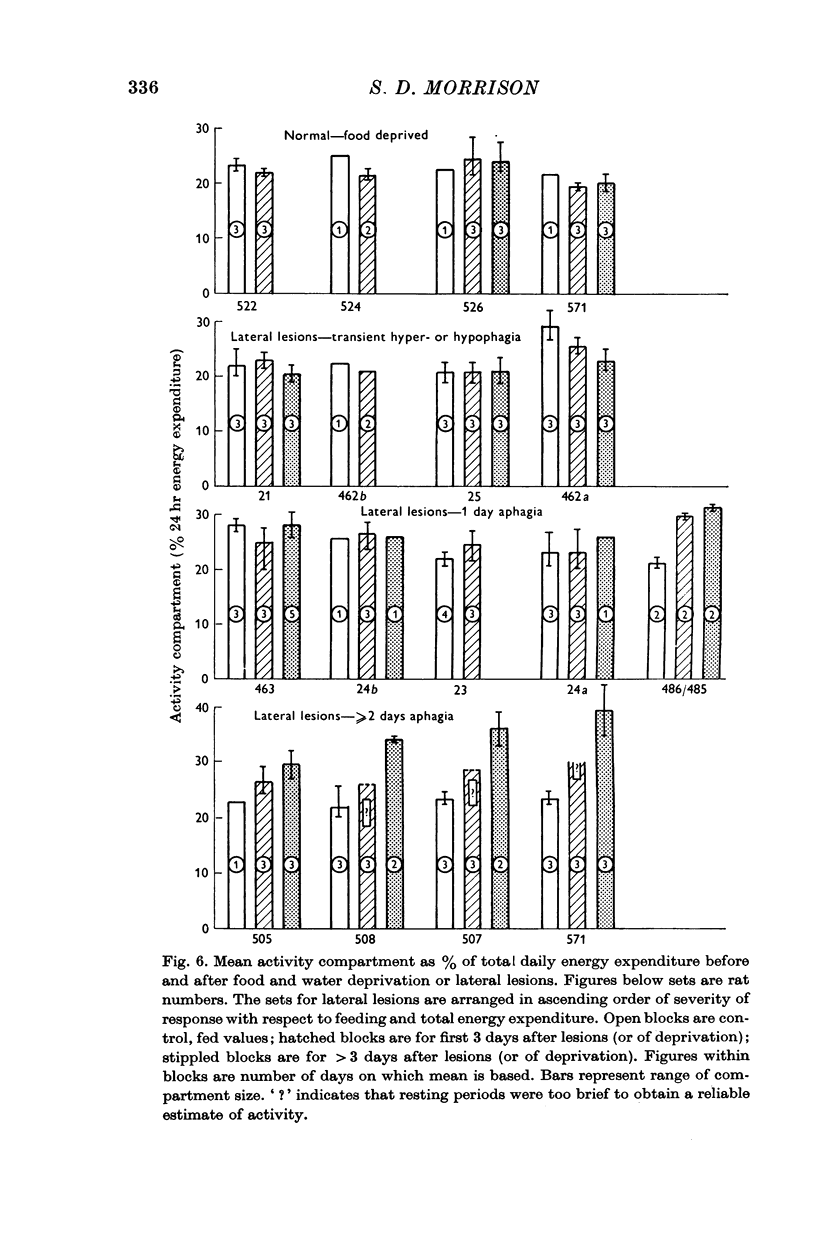
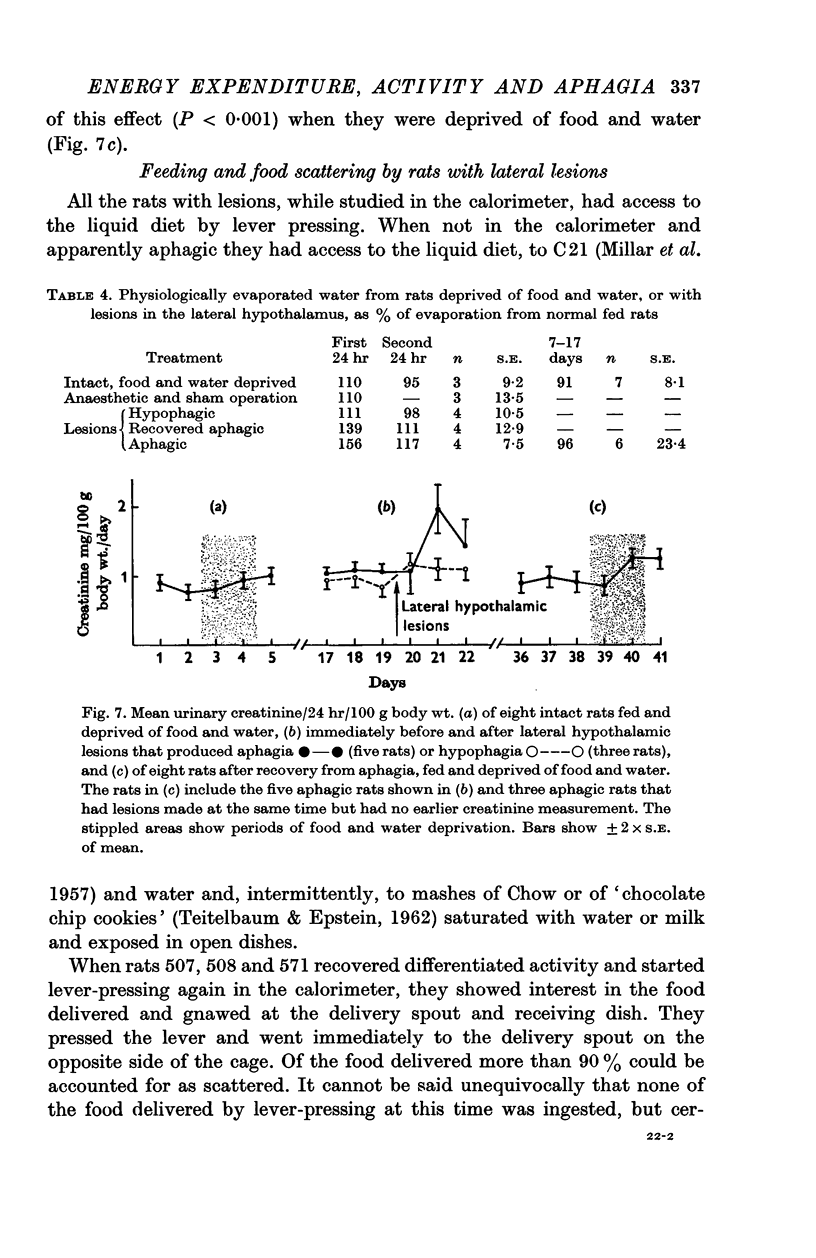
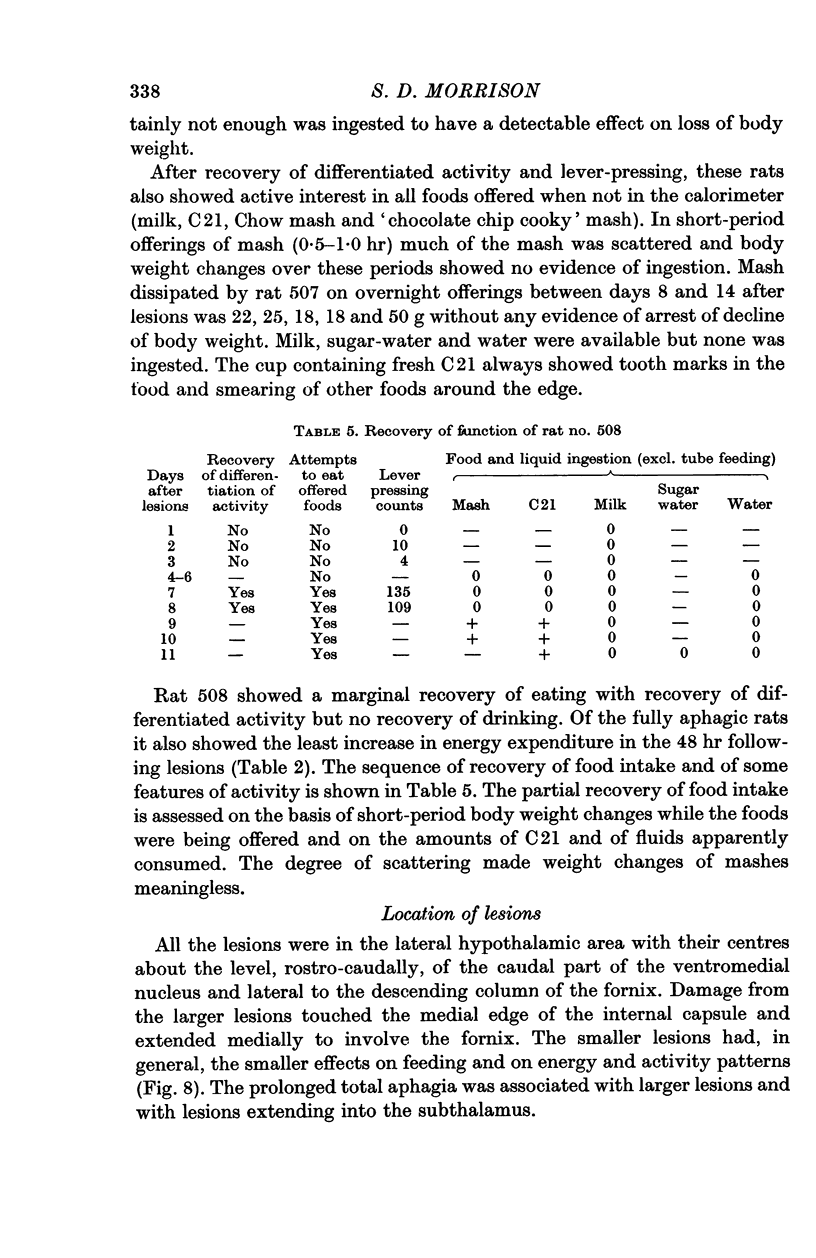
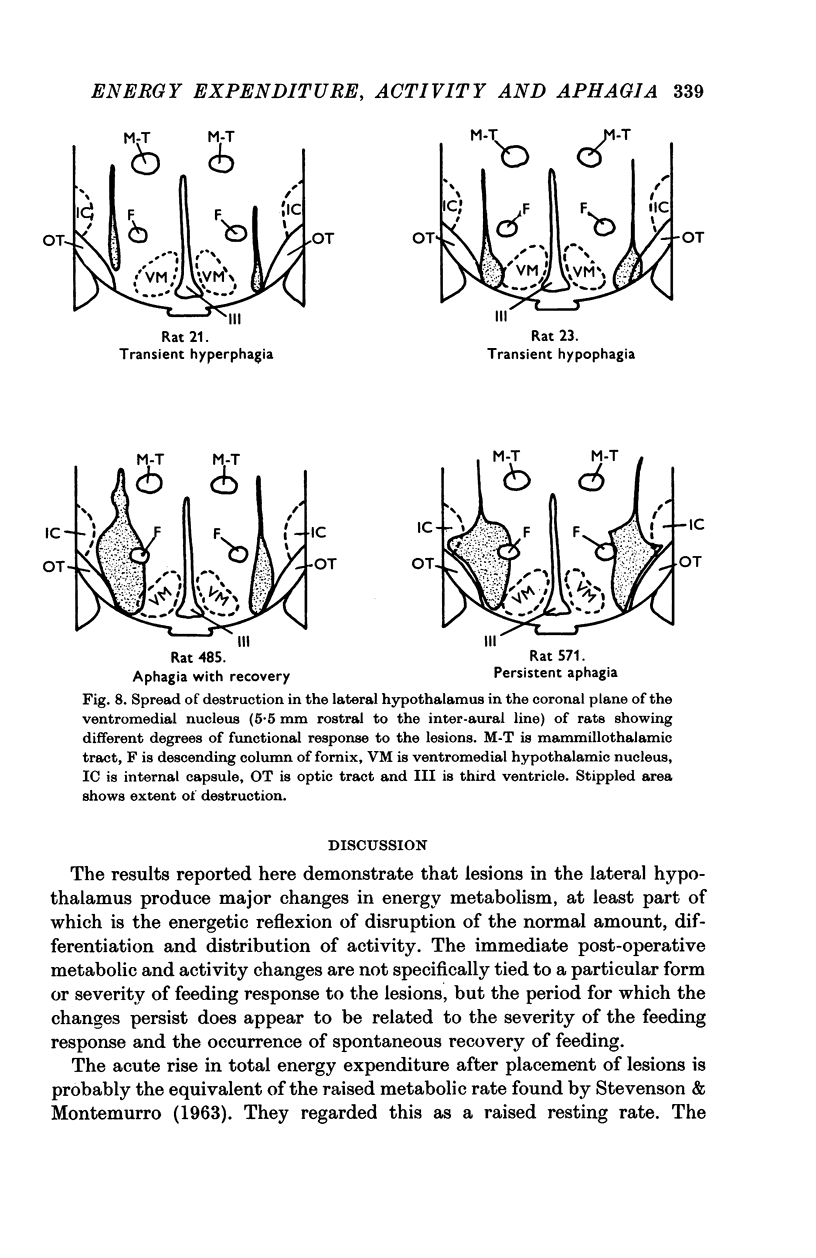
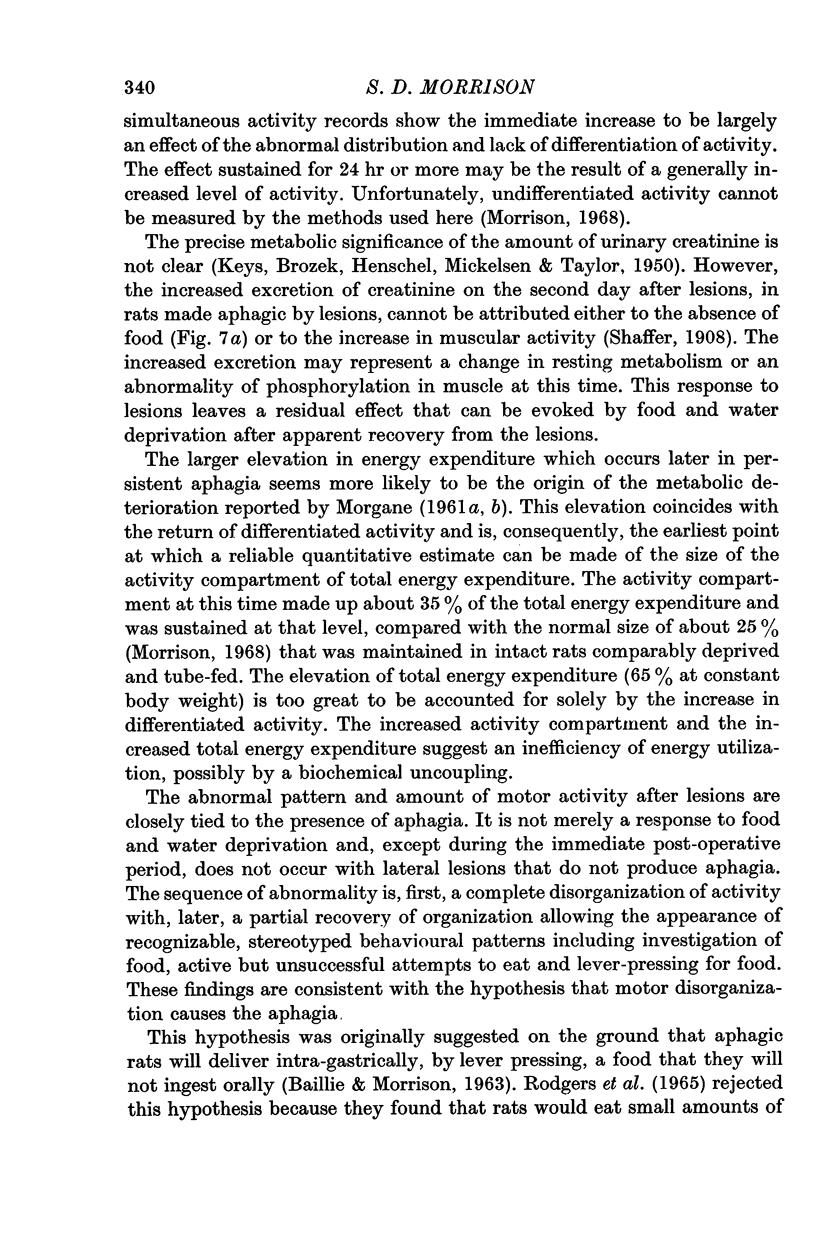
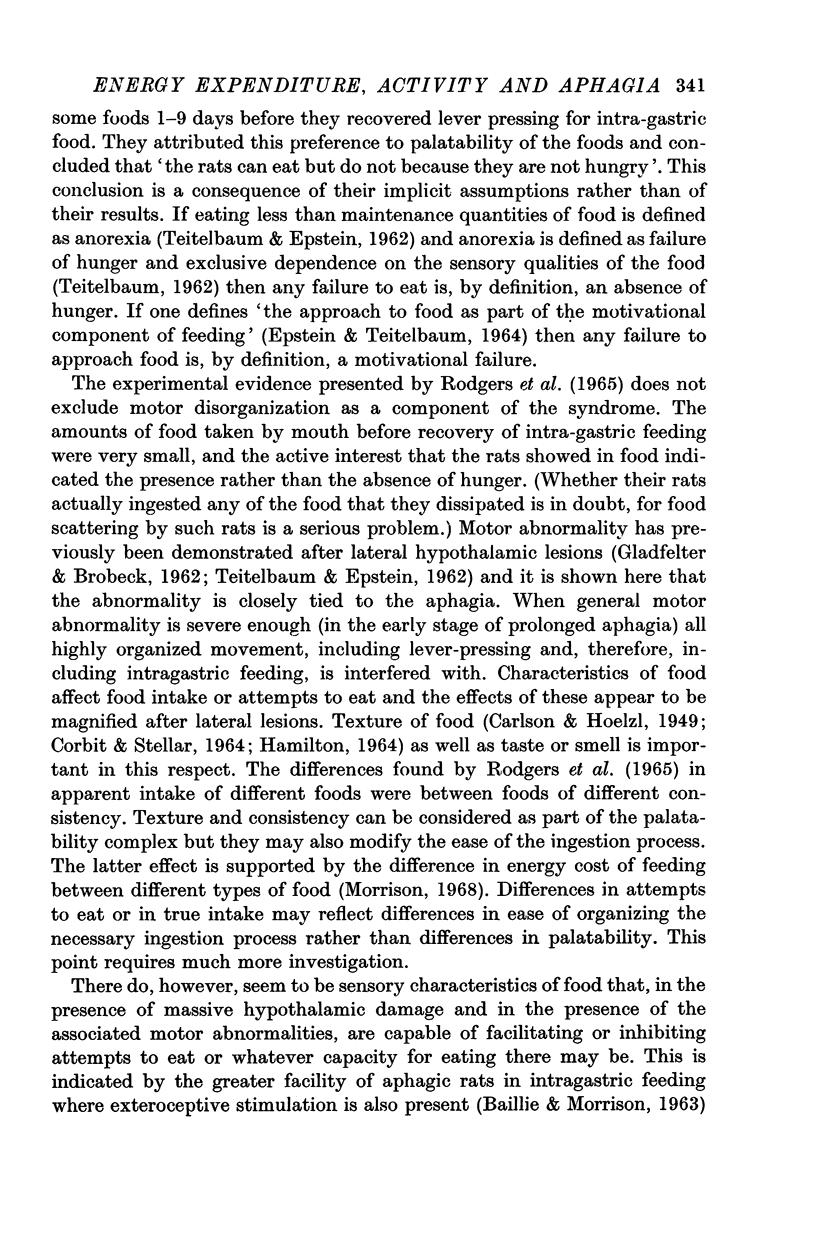
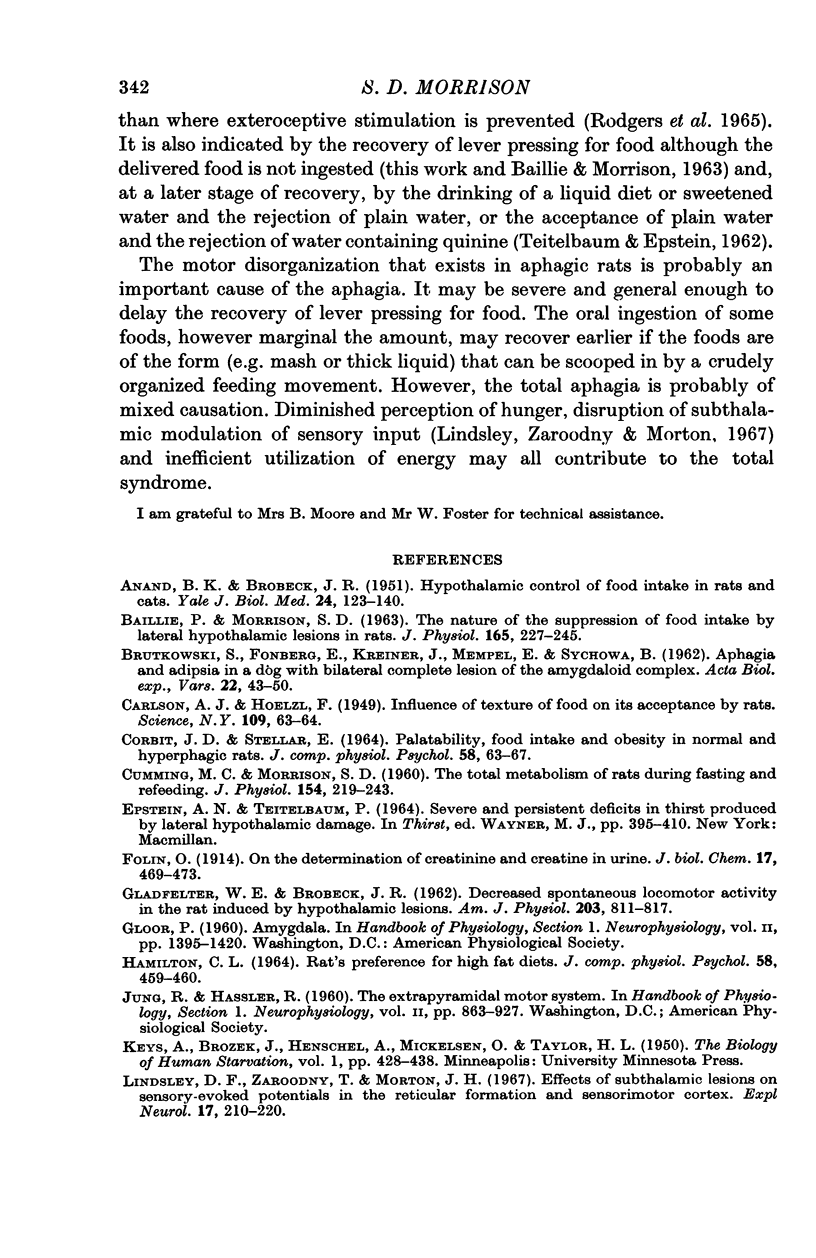
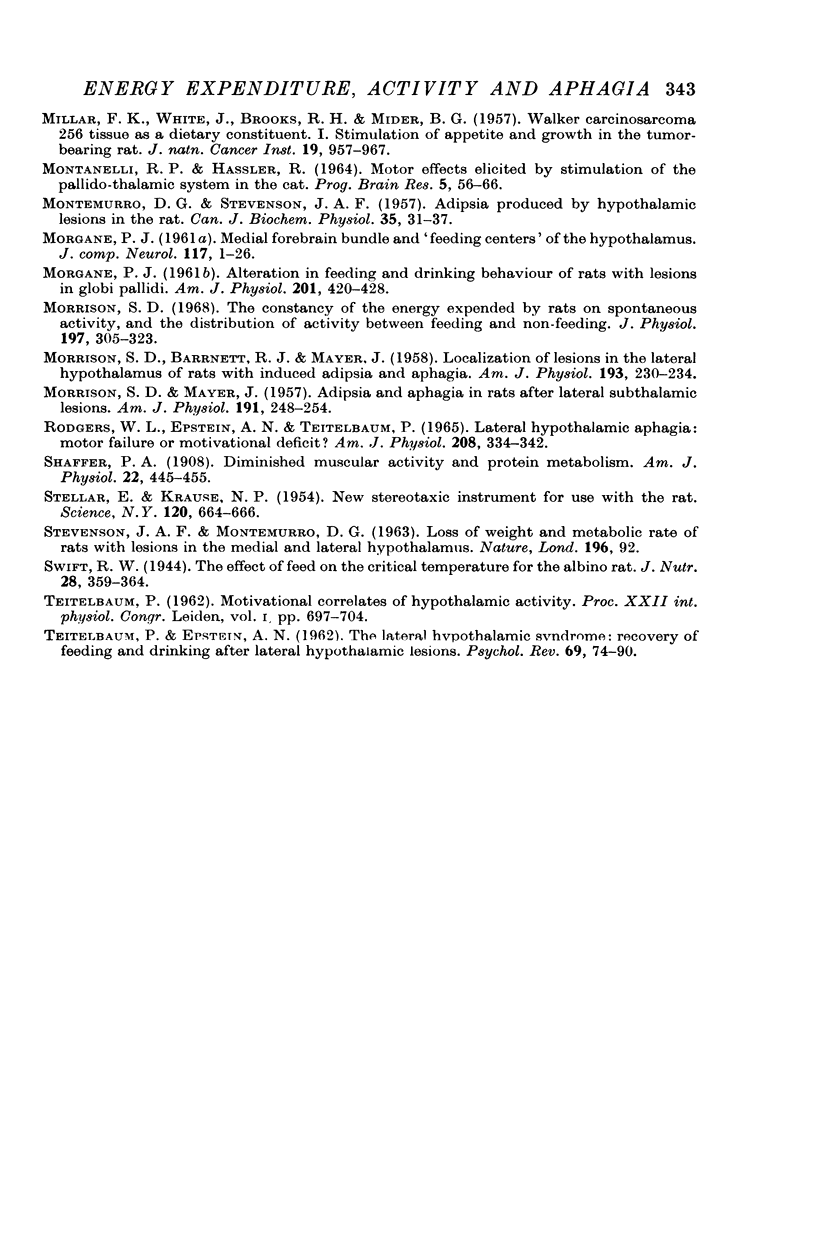
Selected References
These references are in PubMed. This may not be the complete list of references from this article.
- ANAND B. K., BROBECK J. R. Hypothalamic control of food intake in rats and cats. Yale J Biol Med. 1951 Nov;24(2):123–140. [PMC free article] [PubMed] [Google Scholar]
- BAILLIE P., MORRISON S. D. The nature of the suppression of food intake by lateral hypothalamic lesions in rats. J Physiol. 1963 Feb;165:227–245. doi: 10.1113/jphysiol.1963.sp007054. [DOI] [PMC free article] [PubMed] [Google Scholar]
- BRUTKOWSKI S., FONBERG E., KREINER J., MEMPEL E., SYCHOWA B. Aphagia and adipsia in a dog with bilateral complete lesion of the amygdaloid complex. Acta Biol Exp (Warsz) 1962;22:43–50. [PubMed] [Google Scholar]
- CORBIT J. D., STELLAR E. PALATABILITY, FOOD INTAKE, AND OBESITY IN NORMAL AND HYPERHAGIC RATS. J Comp Physiol Psychol. 1964 Aug;58:63–67. doi: 10.1037/h0039787. [DOI] [PubMed] [Google Scholar]
- CUMMING M. C., MORRISON S. D. The total metabolism of rats during fasting and refeeding. J Physiol. 1960 Dec;154:219–243. doi: 10.1113/jphysiol.1960.sp006575. [DOI] [PMC free article] [PubMed] [Google Scholar]
- Carlson A. J., Hoelzel F. Influence of Texture of Food on Its Acceptance by Rats. Science. 1949 Jan 21;109(2821):63–64. doi: 10.1126/science.109.2821.63. [DOI] [PubMed] [Google Scholar]
- GLADFELTER W. E., BROBECK J. R. Decreased spontaneous locomotor activity in the rat induced by hypothalamic lesions. Am J Physiol. 1962 Nov;203:811–817. doi: 10.1152/ajplegacy.1962.203.5.811. [DOI] [PubMed] [Google Scholar]
- HAMILTON C. L. RAT'S PREFERENCE FOR HIGH FAT DIETS. J Comp Physiol Psychol. 1964 Dec;58:459–460. doi: 10.1037/h0047142. [DOI] [PubMed] [Google Scholar]
- Lindsley D. F., Zaroodny T., Morton T. H. Effects of subthalamic lesions on sensory-evoked potentials in the reticular formation and sensorimotor cortex. Exp Neurol. 1967 Feb;17(2):210–220. doi: 10.1016/0014-4886(67)90146-x. [DOI] [PubMed] [Google Scholar]
- MILLAR F. K., WHITE J., BROOKS R. H., MIDER G. B. Walker carcinosarcoma 256 tissue as a dietary constituent. I. Stimulation of appetite and growth in the tumor-bearing rat. J Natl Cancer Inst. 1957 Nov;19(5):957–987. [PubMed] [Google Scholar]
- MONTEMURRO D. G., STEVENSON J. A. Adipsia produced by hypothalamic lesions in the rat. Can J Biochem Physiol. 1957 Jan;35(1):31–37. [PubMed] [Google Scholar]
- MORGANE P. J. Alterations in feeding and drinking behavior of rats with lesions in globi pallidi. Am J Physiol. 1961 Sep;201:420–428. doi: 10.1152/ajplegacy.1961.201.3.420. [DOI] [PubMed] [Google Scholar]
- MORRISON S. D., BARRNETT R. J., MAYER J. Localization of lesions in the lateral hypothalamus of rats with induced adipsia and aphagia. Am J Physiol. 1958 Apr;193(1):230–234. doi: 10.1152/ajplegacy.1958.193.1.230. [DOI] [PubMed] [Google Scholar]
- MORRISON S. D., MAYER J. Adipsia and aphagia in rats after lateral subthalamic lesions. Am J Physiol. 1957 Nov;191(2):248–254. doi: 10.1152/ajplegacy.1957.191.2.248. [DOI] [PubMed] [Google Scholar]
- Morrison S. D. The constancy of the energy expended by rats on spontaneous activity, and the distribution of activity between feeding and non-feeding. J Physiol. 1968 Jul;197(2):305–323. doi: 10.1113/jphysiol.1968.sp008561. [DOI] [PMC free article] [PubMed] [Google Scholar]
- RODGERS W. L., EPSTEIN A. N., TEITELBAUM P. LATERAL HYPOTHALAMIC APHAGIA: MOTOR FAILURE OR MOTIVATIONAL DEFICIT? Am J Physiol. 1965 Feb;208:334–342. doi: 10.1152/ajplegacy.1965.208.2.334. [DOI] [PubMed] [Google Scholar]
- STELLAR E., KRAUSE N. P. New stereotaxic instrument for use with the rat. Science. 1954 Oct 22;120(3121):664–666. doi: 10.1126/science.120.3121.664. [DOI] [PubMed] [Google Scholar]
- STEVENSON J. A., MONTEMURRO D. G. Loss of weight and metabolic rate of rats with lesions in the medial and lateral hypothalamus. Nature. 1963 Apr 6;198:92–92. doi: 10.1038/198092a0. [DOI] [PubMed] [Google Scholar]
- TEITELBAUM P., EPSTEIN A. N. The lateral hypothalamic syndrome: recovery of feeding and drinking after lateral hypothalamic lesions. Psychol Rev. 1962 Mar;69:74–90. doi: 10.1037/h0039285. [DOI] [PubMed] [Google Scholar]


